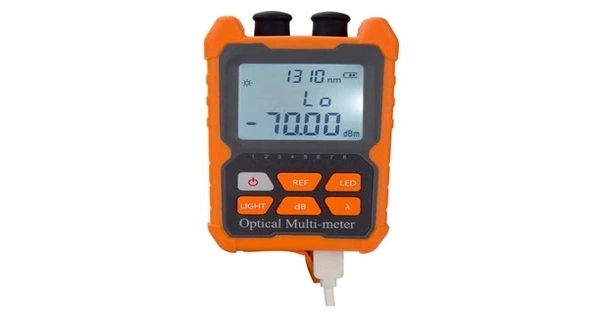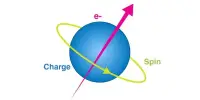An optical power meter (OPM) is a tool for measuring the power of an optical signal. Typically, the term refers to a device used to test average power in fiber optic systems. Other common names for general-purpose light power measuring devices include radiometers, photometers, laser power meters (which can be photodiode sensors or thermopile laser sensors), light meters, and lux meters.
An optical power meter’s primary function is to measure optical power in watts or decibels (dB). It is typically made up of a sensor or detector that captures the optical signal and a display unit that displays the measured power level.
A standard optical power meter is made up of a calibrated sensor, a measuring amplifier, and a display. The sensor is primarily composed of a photodiode selected for the appropriate wavelength range and power level. The measured optical power and set wavelength are displayed on the display unit. A traceable calibration standard is used to calibrate power meters.
A traditional optical power meter responds to a wide range of light wavelengths; however, calibration is wavelength dependent. This isn’t normally a problem because the test wavelength is usually known, but it has a couple of drawbacks. First, the user must set the meter to the correct test wavelength; second, if other spurious wavelengths are present, incorrect readings will occur.
Here are some key features and capabilities of optical power meters:
- Power Measurement Range: Optical power meters are designed to measure a wide range of optical power levels, from very low power levels in the nanowatt (nW) or picowatt (pW) range to high power levels in the milliwatt (mW) or watt (W) range.
- Wavelength Range: Optical power meters are typically designed to work with specific wavelength ranges. They may cover a broad spectrum, such as 800 nm to 1700 nm, or focus on specific wavelength bands, such as 1310 nm or 1550 nm. Some power meters are tunable and can measure power at different wavelengths.
- Measurement Units: Optical power meters can display power measurements in absolute units like watts or in logarithmic units like decibels (dB). The dB scale is commonly used in fiber optics because it allows for easy comparison of power levels and calculation of signal losses.
- Connector Types: Optical power meters use various connectors to connect to optical fibers or other optical devices. SC, FC, ST, and LC are examples of common connector types. To accommodate different connector types, adapters or interchangeable connector heads can be used.
Fiber optic technicians, network engineers, and researchers who work with optical systems need optical power meters. They aid in the installation, maintenance, troubleshooting, and performance optimization of optical networks by ensuring proper power levels and detecting problems such as signal degradation or loss.
















